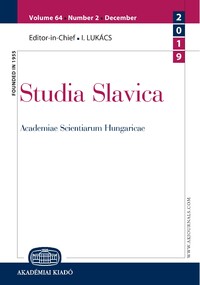Устойчивые сравнения с компонентом-ориентализмом – этносимволом Украины
Stable Comparisons with Oriental Components – Ethnic Symbols of Ukraine
Author(s): Irina Vladimirovna KuznetsovaSubject(s): Phraseology
Published by: Akadémiai Kiadó
Keywords: language contacts; Оriental loanwords; adaptation; Ukrainian language; national symbols; phraseology; stable comparisons; the basis of comparison
Summary/Abstract: It is an undeniable fact that as a result of centuries of historical, cultural, and neighbourly contacts, Orientalisms penetrated the languages of the Slavs in quite large numbers. They are firmly fixed in the lexical structure of Slavic languages both in their original meaning (corresponding to the original language) and in a sense reinterpreted on Slavic soil. Numerous linguistic and culturological works are devoted to this topic. The Ukrainian language is no exception in this regard. Historical lexicology studies the causes, time, and ways of penetration and adaptation of Orientalisms in the Ukrainian language. Borrowings from Oriental languages make up a significant layer of the Ukrainian vocabulary. The fate of borrowings varies: they eithe r remained exoticisms in the recipient language or as a result of extralinguistic factors, they were assimilated so much that they became symbols of national culture. For example, the fate of Orientalisms leleka ‘stork’, kobza, and surma in Ukraine is indicative in this regard. One of the frequent associations with the country is the image of Zaporozhian Cossacks in wide bloomers with an integral attribute – tobacco. The purpose of this study is to identify the semantic and functional peculiarities of the Ukrainian Orientalisms in comparison. In this paper, using the example of these lexical units, we consider the phrase-making potential as well as the semantic and functional features of these borrowed Orientalisms associated with Ukraine, as part of comparative constructions. The paper deals with both outdated similes and those that are actively used nowadays. In addition to this, the author gives possible culturological, historical, and etymological comments to similes, showing the meaning of phraseological units and components that are parts of similes. The study demonstrates that the analyzed Orientalisms have been so firmly established in the foundation of the Ukrainian language that they are not perceived in the recipient language as foreign elements. On the contrary, they have become ethnic symbols in Ukrainian linguistic culture, they are productive in derivational terms (the paper does not deal with this question), and operate in stable compa risons, including imagery and poetry. However, their ethnosymbolic features, apparently, have imposed restrictions on their phraseological potential: in comparison with Orientalisms that have not become markers of Ukrainian culture (baraban, bazar, kavun, kazan, etc.), they are phraseologically less active, not frequent a s part of stable comparisons referring to a standard, measure of action, quality, etc.
Journal: Studia Slavica Academiae Scientiarum Hungaricae
- Issue Year: 65/2020
- Issue No: 1
- Page Range: 97-105
- Page Count: 9
- Language: Russian
- Content File-PDF

